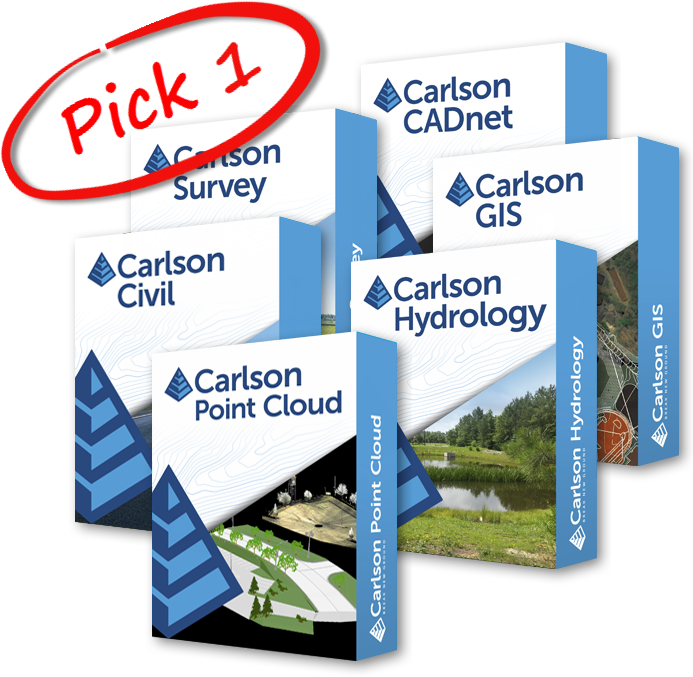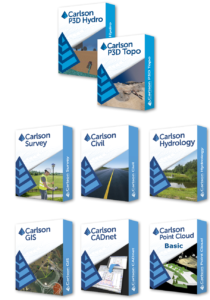2024 Virtual Workshop Recordings v2
Test Sessions 11/18/2024 and 12/9/2024
| Session ID | Time (EST) | Session Title Presenter(s) | Link to Pre-Register and receive reminders | Meeting ID to Join in Progress |
|---|---|---|---|---|
| Monday 11/18/2024 Test Session #1 | 1:00 - 1:30 (no credit) | Log in, Audio & Video Check Jennifer DiBona | ||
| Monday 12/9/2024 Test Session #2 | 1:00 - 1:30 (no credit) | Log in, Audio & Video Check Jennifer DiBona | Click here to Register or Join | 944-740-571 |
WEBCAMS and MICROPHONES: You will NOT need a webcam or microphone. You will be able to type your Questions into the Questions panel.
REMINDER: If you have trouble logging in or getting access during the live sessions, it’s unlikely that anyone on our team will be able to help you. If you have trouble logging in or accessing the session, you will need to ask someone else to help or contact Go To Webinar support here: http://support.goto.com/webinar
| Session ID | Time (EST) | Session Title Presenter(s) | Link to Pre-Register and receive reminders | Meeting ID to Join in Progress |
|---|---|---|---|---|
| Monday 11/18/2024 Test Session #1 | 1:00 - 1:30 (no credit) | Log in, Audio & Video Check Jennifer DiBona | ||
| Monday 12/9/2024 Test Session #2 | 1:00 - 1:30 (no credit) | Log in, Audio & Video Check Jennifer DiBona | Click here to Register or Join | 944-740-571 |
WEBCAMS and MICROPHONES: You will NOT need a webcam or microphone. You will be able to type your Questions into the Questions panel.
REMINDER: If you have trouble logging in or getting access during the live sessions, it’s unlikely that anyone on our team will be able to help you. If you have trouble logging in or accessing the session, you will need to ask someone else to help or contact Go To Webinar support here: http://support.goto.com/webinar
| Session ID | Time (EST) | Session Title Presenter(s) | Link to Pre-Register and receive reminders | Meeting ID to Join in Progress |
|---|---|---|---|---|
| Monday 11/18/2024 Test Session #1 | 1:00 - 1:30 (no credit) | Log in, Audio & Video Check Jennifer DiBona | ||
| Monday 12/9/2024 Test Session #2 | 1:00 - 1:30 (no credit) | Log in, Audio & Video Check Jennifer DiBona | Click here to Register or Join | 944-740-571 |
WEBCAMS and MICROPHONES: You will NOT need a webcam or microphone. You will be able to type your Questions into the Questions panel.
REMINDER: If you have trouble logging in or getting access during the live sessions, it’s unlikely that anyone on our team will be able to help you. If you have trouble logging in or accessing the session, you will need to ask someone else to help or contact Go To Webinar support here: http://support.goto.com/webinar
| Session ID | Time (EST) | Session Title Presenter(s) | Link to Pre-Register and receive reminders | Meeting ID to Join in Progress |
|---|---|---|---|---|
| Monday 11/18/2024 Test Session #1 | 1:00 - 1:30 (no credit) | Log in, Audio & Video Check Jennifer DiBona | ||
| Monday 12/9/2024 Test Session #2 | 1:00 - 1:30 (no credit) | Log in, Audio & Video Check Jennifer DiBona | Click here to Register or Join | 944-740-571 |
WEBCAMS and MICROPHONES: You will NOT need a webcam or microphone. You will be able to type your Questions into the Questions panel.
REMINDER: If you have trouble logging in or getting access during the live sessions, it’s unlikely that anyone on our team will be able to help you. If you have trouble logging in or accessing the session, you will need to ask someone else to help or contact Go To Webinar support here: http://support.goto.com/webinar
– Joni – 12/20/2024 9:45 AM
– Joni – 12/17/2024 10:57 AM
– Jennifer – 11/22/2024 4:12 PM
– Jennifer – 11/18/2024 10:12 AM
Tuesday, 11/19/2024 Sessions
| Session ID | Time (ET) | Session Title Presenter(s) | Link to Pre-Register and receive reminders | Meeting ID to Join in Progress |
|---|---|---|---|---|
| Tuesday 11/19/2024 Session #1-1 | 10:00 - 11:30 | Overview of Carlson Software with That CAD Girl, Jennifer DiBona | ||
| Tuesday 11/19/2024 Session #1-2 | 12:00 - 1:30 | Overview of Carlson Survey and GIS with Doug Aaberg of Carlson Software | ||
| Tuesday 11/19/2024 Session #1-3 | 2:00 - 3:30 | Overview of Carlson Point Cloud and Carlson Photo Capture with Doug Aaberg | ||
| Tuesday 11/19/2024 Session #1-4 | 4:00 - 5:30 | Overview of Carlson Civil and Hydrology with Mark Long of Carlson Software | ||
| Wrap up | 5:45 - 6:15 | After Hours at our Virtual Booth (non-credit) |
WEBCAMS and MICROPHONES: You will NOT need a webcam or microphone. You will be able to type your Questions into the Questions panel.
REMINDER: If you have trouble logging in or getting access during the live sessions, it’s unlikely that anyone on our team will be able to help you. If you have trouble logging in or accessing the session, you will need to ask someone else to help or contact Go To Webinar support here: http://support.goto.com/webinar
Wednesday, 11/20/2024 Sessions
| Session ID | Time (ET) | Session Title Presenter(s) | Link to Pre-Register and receive reminders | Meeting ID to Join in Progress |
|---|---|---|---|---|
| Wednesday 11/20/2024 Session #2-1 | 10:00 - 11:30 | Overview of Carlson Precision 3D Topo and Hydrology with Bruce Carlson | ||
| Wednesday 11/20/2024 Session #2-2 | 12:00 - 1:30 | Continuation of Overview of Carlson Precision 3D Topo and Hydrology with Bruce Carlson | ||
| Wednesday 11/20/2024 Session #2-3 | 2:00 - 3:30 | Overview of Carlson Takeoff Suite modules - CADNet, Construction, Trench, GeoTech - with That CAD Girl, Jennifer DiBona | ||
| Wednesday 11/20/2024 Session #2-4 | 4:00 - 5:30 | Continuation of Overview of Carlson Takeoff Suite modules - CADNet, Construction, Trench, GeoTech - with Jennifer DiBona | ||
| Wrap up | 5:45 - 6:15 | After Hours at our Virtual Booth (non-credit) |
WEBCAMS and MICROPHONES: You will NOT need a webcam or microphone. You will be able to type your Questions into the Questions panel.
REMINDER: If you have trouble logging in or getting access during the live sessions, it’s unlikely that anyone on our team will be able to help you. If you have trouble logging in or accessing the session, you will need to ask someone else to help or contact Go To Webinar support here: http://support.goto.com/webinar
Tuesday, 12/10/2024 Sessions
| Session ID | Time (ET) | Session Title Presenter(s) | Link to Pre-Register and receive reminders | Meeting ID to Join in Progress |
|---|---|---|---|---|
| Tuesday 12/10/2024 Session #3-1 | 10:00 - 11:30 | Advanced Carlson Survey and Field to Finish with Doug Aaberg of Carlson Software | Click here to Register or Join | 705-051-627 |
| Tuesday 12/10/2024 Session #3-2 | 12:00 - 1:30 | Continuation of Advanced Carlson Survey and Field to Finish with Doug Aaberg | Click here to Register or Join | 775-577-547 |
| SEE BELOW - RESCHEDULED TO 12/17/2024 Session #3-3 | 2:00 - 3:30 | Adjusting YOUR Datasets with SurvNet with Donnie Stallings PLS | Click here to Register or Join | 173-496-507 |
| SEE BELOW - RESCHEDULED TO 12/17/2024 Session #3-4 | 4:00 - 5:30 | Continuation of Adjusting YOUR Datasets with SurvNet with Donnie Stallings | Click here to Register or Join | 700-219-995 |
| Wrap up | 5:45 - 6:15 | After Hours at our Virtual Booth (non-credit) | Click here to Register or Join | 725-113-731 |
WEBCAMS and MICROPHONES: You will NOT need a webcam or microphone. You will be able to type your Questions into the Questions panel.
REMINDER: If you have trouble logging in or getting access during the live sessions, it’s unlikely that anyone on our team will be able to help you. If you have trouble logging in or accessing the session, you will need to ask someone else to help or contact Go To Webinar support here: http://support.goto.com/webinar
Wednesday, 12/11/2024 Sessions
| Session ID | Time (ET) | Session Title Presenter(s) | Link to Pre-Register and receive reminders | Meeting ID to Join in Progress |
|---|---|---|---|---|
| Wednesday 12/11/2024 Session #4-1 | 10:00 - 11:30 | Surface Modeling in Carlson Software with That CAD Girl, Jennifer DiBona | ||
| Wednesday 12/11/2024 Session #4-2 | 12:00 - 1:30 | Continuation of Surface Modeling in Carlson Software with Jennifer DiBona | ||
| Wednesday 12/11/2024 Session #4-3 | 2:00 - 3:30 | Advanced Design with Carlson Civil and Hydrology with Mark Long of Carlson Software | ||
| Wednesday 12/11/2024 Session #4-4 | 4:00 - 5:30 | Continuation of Advanced Design with Carlson Civil and Hydrology with Mark Long | ||
| Wrap up | 5:45 - 6:15 | After Hours at our Virtual Booth (non-credit) |
WEBCAMS and MICROPHONES: You will NOT need a webcam or microphone. You will be able to type your Questions into the Questions panel.
REMINDER: If you have trouble logging in or getting access during the live sessions, it’s unlikely that anyone on our team will be able to help you. If you have trouble logging in or accessing the session, you will need to ask someone else to help or contact Go To Webinar support here: http://support.goto.com/webinar
Tuesday, 12/17/2024 Sessions
| Session ID | Time (ET) | Session Title Presenter(s) | Link to Pre-Register and receive reminders | Meeting ID to Join in Progress |
|---|---|---|---|---|
| Tuesday 12/17/2024 Session #3-3 | 2:00 - 3:30 | Adjusting YOUR Datasets with SurvNet with Donnie Stallings PLS | ||
| Tuesday 12/17/2024 Session #3-4 | 4:00 - 5:30 | Continuation of Adjusting YOUR Datasets with SurvNet with Donnie Stallings |
WEBCAMS and MICROPHONES: You will NOT need a webcam or microphone. You will be able to type your Questions into the Questions panel.
REMINDER: If you have trouble logging in or getting access during the live sessions, it’s unlikely that anyone on our team will be able to help you. If you have trouble logging in or accessing the session, you will need to ask someone else to help or contact Go To Webinar support here: http://support.goto.com/webinar
11/24/2023 10:12 AM
12/30/2021 11:16 AM
12/20/2021 4:48 PM
12/20/2021 10:05 AM
12/3/2021 10:01 AM
For those of you in my last session Thursday (Field to Finish), we had a lot of comments about the Tree Survey feature coding in Carlson Field to Finish. I reached out to Doug Aaberg and have confirmed that he will include that in his presentation to you on Dec 14th. Thanks for the feedback!
12/3/2021 8:53 AM
| Name & Title (in order of appearance) | Contact Info |
|---|---|
| Jennifer DiBona That CAD Girl | [email protected] 954-223-4475 |
| Claire DiBlasi That CAD Girl | [email protected] 954-223-4475 |
| Scott Griffin Global Sales Director for Carlson Software | [email protected] 904-553-5520 |
| Mark Long Civil & Hydro Specialist for Carlson Software | [email protected] 919-219-5415 |
| Doug Aaberg Survey Support for Carlson Software | [email protected] 606-564-5028 |
Our Instructors
Workshop Special Pricing
25% off maintenance renewals or extensions

Workshop Special Pricing
Swap! Any module with another in your existing Carlson license
$500
Workshop Special Pricing
Pick 3 with a year of maintenance
$2,750
Use Coupon Code vw23pick3
Workshop Special Pricing
Civil Suite with maintenance
$2,950
Use Coupon Code vw23pick4
Workshop Special Pricing
Pick 4 with maintenance
$2,950
Use Coupon Code vw23pick4
Workshop Special Pricing
Takeoff Suite with a year of maintenance
$5,995
Use Coupon Code vw23takeoff
Workshop Special Pricing
Add Point Cloud Advanced to any existing Carlson license
$2,750
Workshop Special Pricing
Survey with embedded AutoCAD (OEM)
$2,500
Use Coupon Code vw23surveyoem
Workshop Special Pricing
Add a module to your existing Carlson with IntelliCAD
$500

Workshop Special Pricing
25% off maintenance renewals or extensions
Workshop Special Pricing
Civil Suite with maintenance thru 8/1/2022
$2,500
Use Coupon Code my21vwp4
Workshop Special Pricing
Pick 4 with maintenance thru 8/1/2022
$2,500
Use Coupon Code my21vwp4
Workshop Special Pricing
Pick 2 with maintenance thru 8/1/2022
$1,750
Use Coupon Code my21vwp2
Workshop Special Pricing
Add P3D Hydro to your P3D Topo License
$1,000 (Retail $1,750)
Workshop Special Pricing
Takeoff Suite with maintenance thru 8/1/2022
$4,500
Use Coupon Code my21vwto
Workshop Special Pricing
Survey OEM 2021
includes upgrade to 2022
$2,350
Use Coupon Code my21vws
Workshop Special Pricing
Pick 2 with maintenance thru 8/1/2022
$1,750
Use Coupon Code my21vwp2
Workshop Special Pricing
Takeoff OEM 2021
includes upgrade to 2022
$5,500
Use Coupon Code my21vwto
Workshop Special Pricing
Civil Suite with maintenance thru 8/1/2022
$2,500
Use Coupon Code my21vwp4
Workshop Special Pricing
Pick 4 with maintenance thru 8/1/2022
$2,500
Use Coupon Code my21vwp4
1 Available Now!
Use Coupon Code xxxxxx at checkout to receive a 95% discount on any single module that’s part of Select Suite.
Also includes one-year of maintenance.
Click below to visit Carlson CAD Solutions Online Store then
Choose from Carlson Survey, Civil, Hydrology, GIS, CADnet or Point Cloud Basic.



